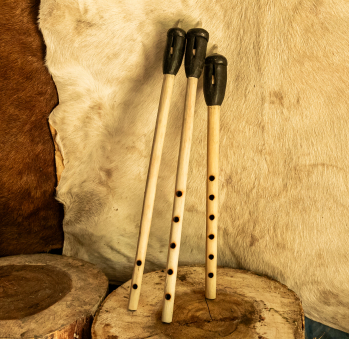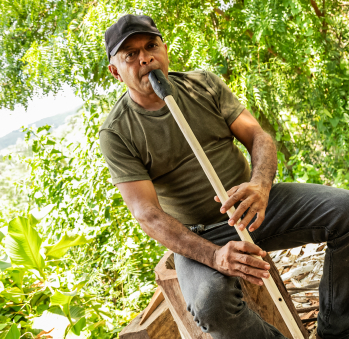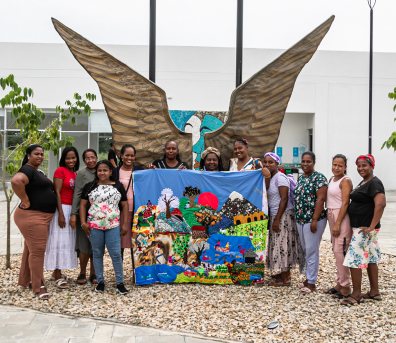Jaider García
Workshop: Corporación de artesanos luthier de san jacinto
Craft: Luthería
Trail: Bolívar Route
Location: San Jacinto, Bolívar
Amid the sound of gaitas and drums, in his grandmother’s house where he would hear the Gaiteros de San Jacinto rehearse, Jaider García grew up. His grandfather, Toño García, joined the well-known group in 1985. The group, which has been around since 1940, won the Latin Grammy for Best Folkloric Album in 2006. By that time, Jaider was just a couple of years old, so he was immersed in the sounds of the music from a very young age. When he was about fifteen, he tried making a little drum for children, his first tambora, and that’s when he realized the craft ran in his blood. After all, his grandfather had been making his own gaitas long before they became commercially popular. Now, Jaider is part of a new generation of instrument makers, alongside his brothers Roberto and Nelson, his cousin Yovani, and his son Geovany. They carry the torch of their family’s tradition, and although they no longer perform the music they grew up with, the next generation is already stepping in. Two of Jaider’s nephews have begun playing at the National Gaitas Festival in San Jacinto.
To play the rhythms of the gaita, you need three kinds of drums—the tambor, the tambora, and the llamador—, maracas, and both male and female gaitas. Jaider and his family not only masterfully craft each of these instruments, but they also make yembes, dununes, batás, and Dominican tamboras. They have a precise understanding of the materials needed for each one—how much hemp is required to braid a drum, how much wood, and how many chuira seeds they need to gather from the trees in their yard to make the totumo maracas. Getting to this point has been a process of technical refinement and dedication to the craft. They moved from measuring the circumference of drums with whatever was available, such as the lid of a pot, to now being able to work with precise measurements. Part of their pride comes from the fact that their tradition almost disappeared, and that they were able to revive it with the help of a government initiative for Colombian luthiers in 2016. It turns out that San Jacinto was not immune to the effects of the war in Bolívar, nor to the displacement that followed. One of the impacts of the conflict was that, after people were forced to leave their homes in these once-prosperous lands—where most men worked in agriculture—newcomers began to indiscriminately destroy everything,and logging wood. So when people returned to their homes and reclaimed their space, they found that the environment had changed. There was a shortage of materials, and their traditions had become scattered. Thankfully, they managed to reconnect with and preserve these traditions, and as Jaider says, the bright side was being able to reinvent themselves.
With so many years of tradition behind them, Jaider and his family have seen the changes that have come to their instruments. In the case of the gaitas, which come in pairs, with the female used for the high notes and the male for the low ones, they have observed that the cardón cactus traditionally used for the body is now being replaced by one-inch PVC pipes or wood, and the duck feather that the player blows through has been swapped out for the caps of surgical needles. What hasn’t changed, and is unlikely to, is the mixture of beeswax and charcoal used to make the head of each gaita. This mixture attracts bees, which, when the instrument is left unattended, often take the opportunity to make their home inside of it— it smells like home to them.
Craft


















Artisans along the way
Artisans along the way
No puede copiar contenido de esta página










































































